flash freezing demo Freezing and thawing ramen
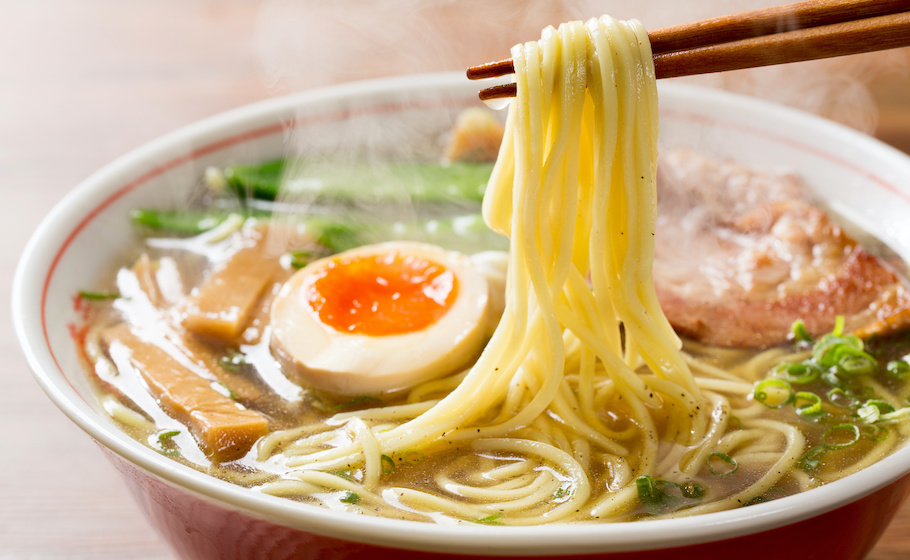
This time, we will be experimenting with freezing and thawing piping hot ramen.
I experimented with how to boil noodles before freezing and how to freeze and thaw soup.
In this article, we will tell you what is the best way to freeze and thaw ramen so that it remains delicious even after thawing.
I will tell you about it with plenty of images, so please read to the end.
The key point is that the fire will re-enter when it thaws.
Take this into consideration and take a look at the results of adjusting the boiling time.
Treatment of noodles before freezing
This time I made ramen using raw noodles.
The key point is that the fire will re-enter when it thaws.
I'm going to shorten the boiling time of the noodles, assuming that the noodles will come back on fire when they thaw.
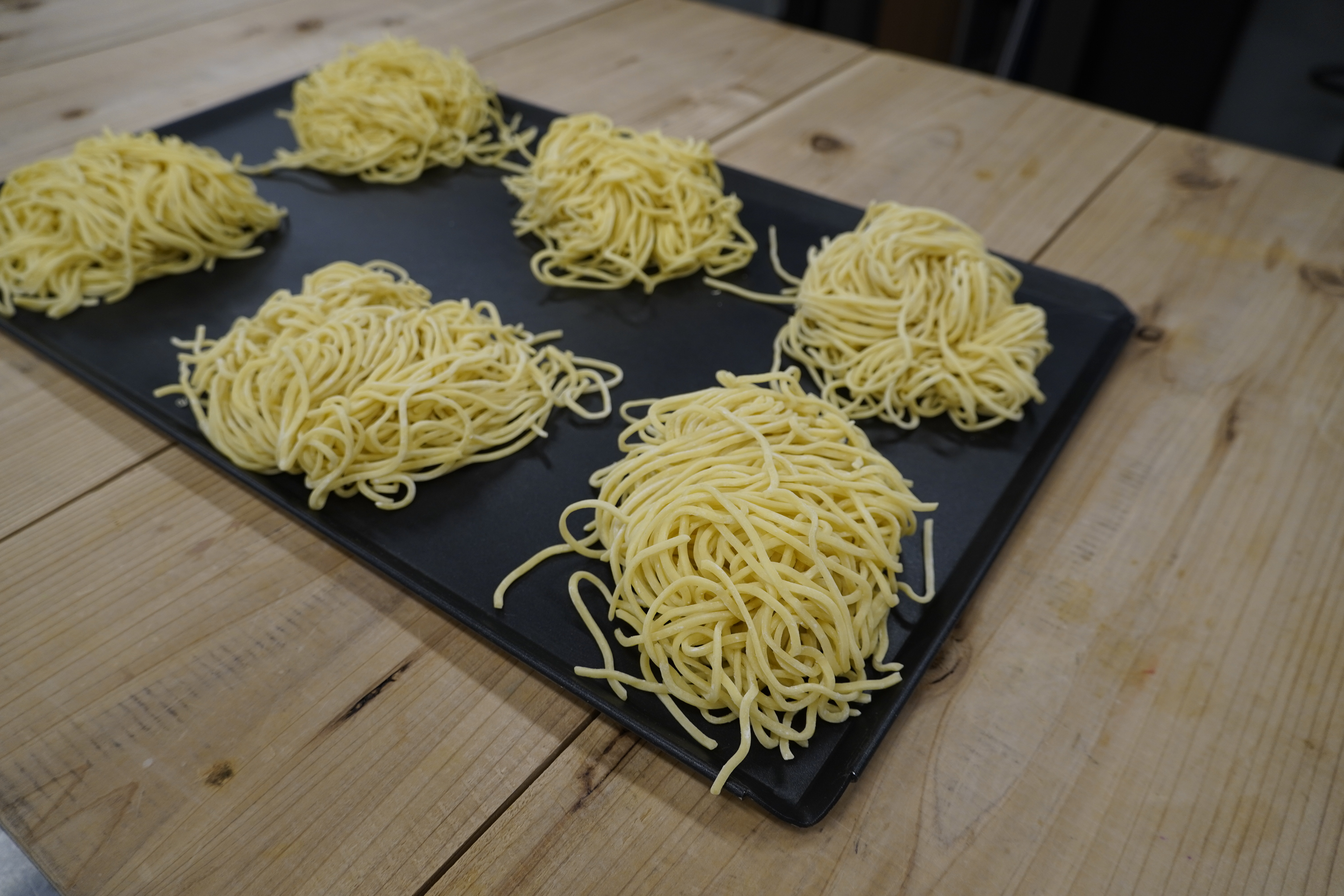
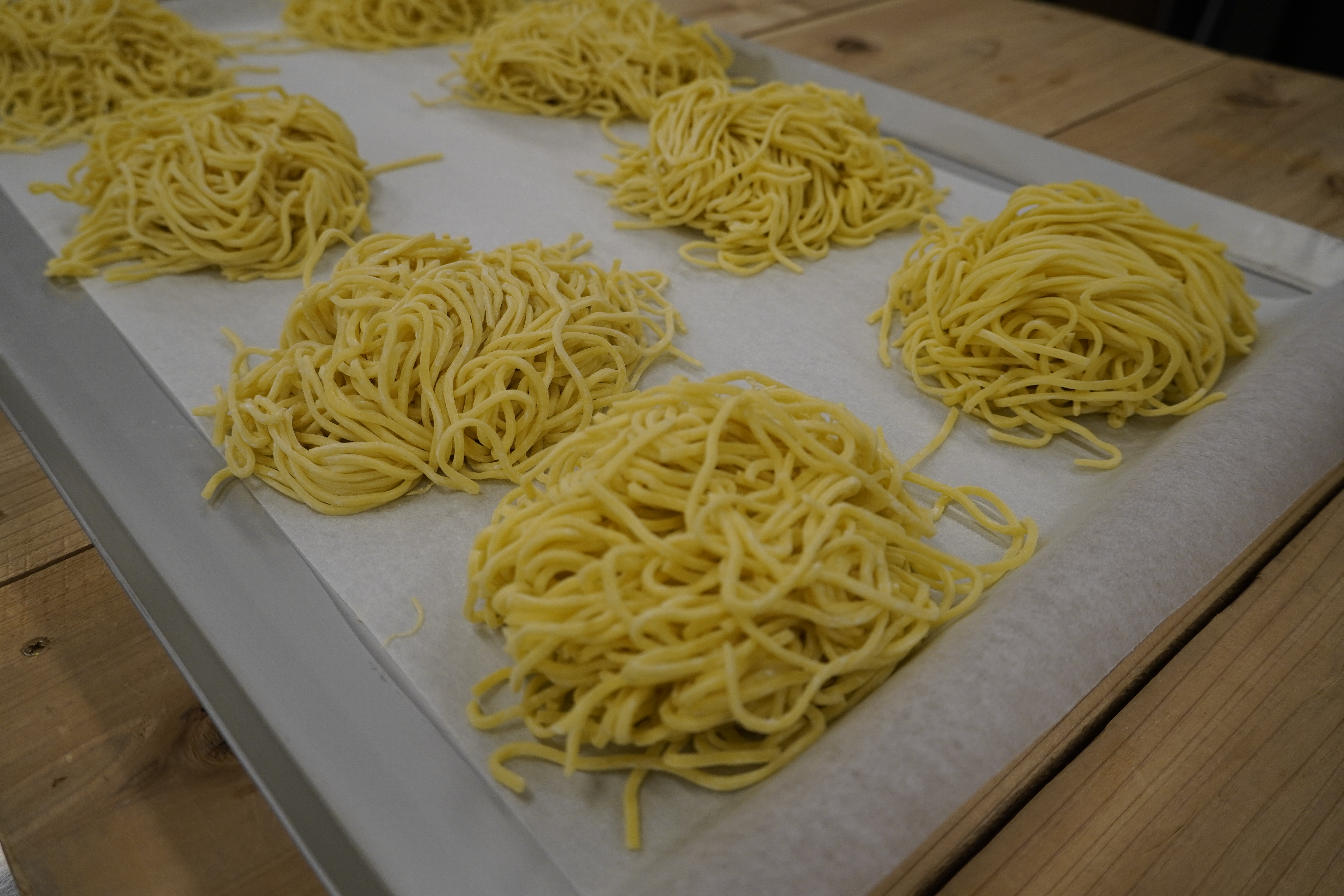
Boil these noodles at a certain time.
It is important to rinse thoroughly with water after boiling.
If you freeze the noodles after just draining them without adding water, the center of the noodles will end up being overcooked.
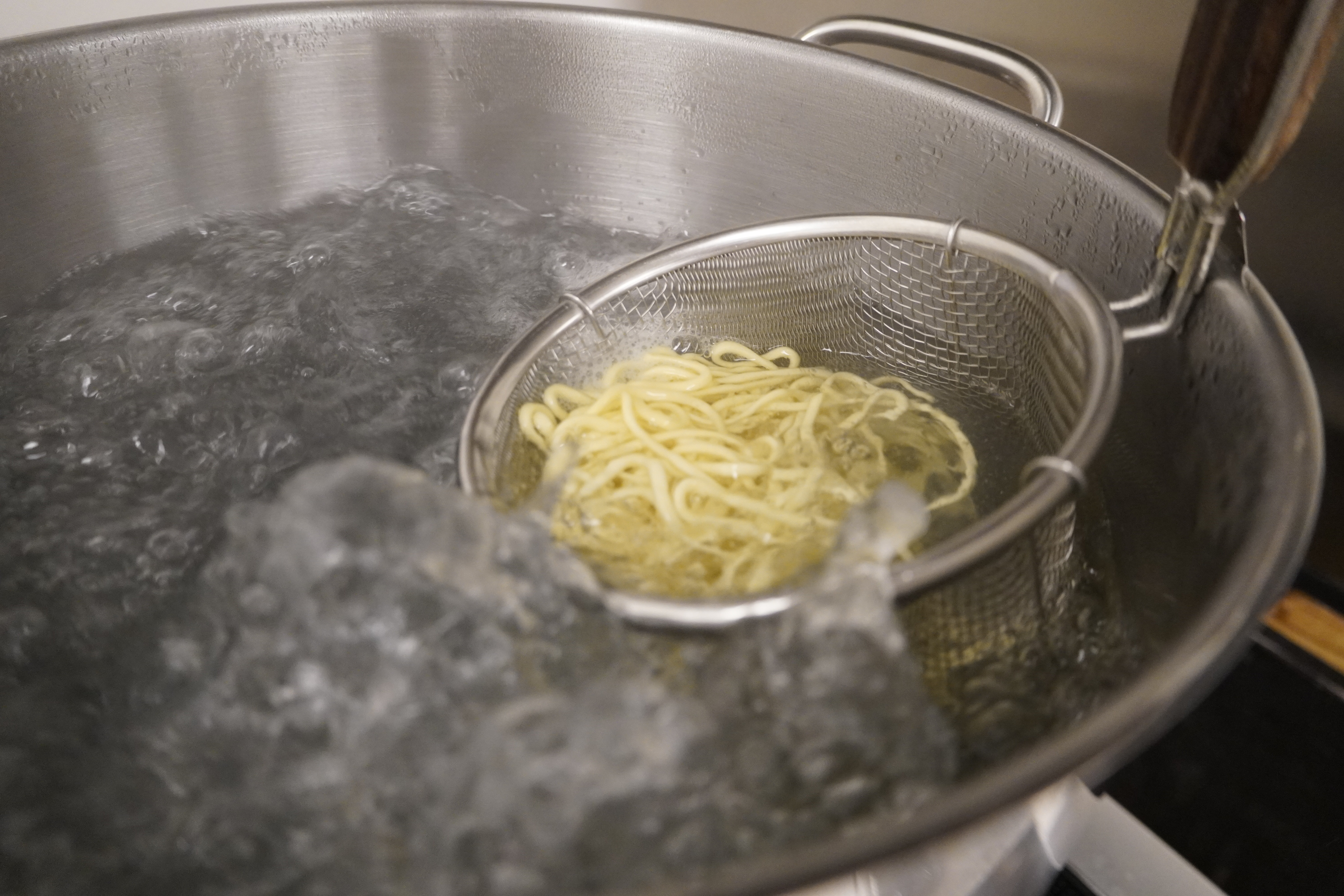
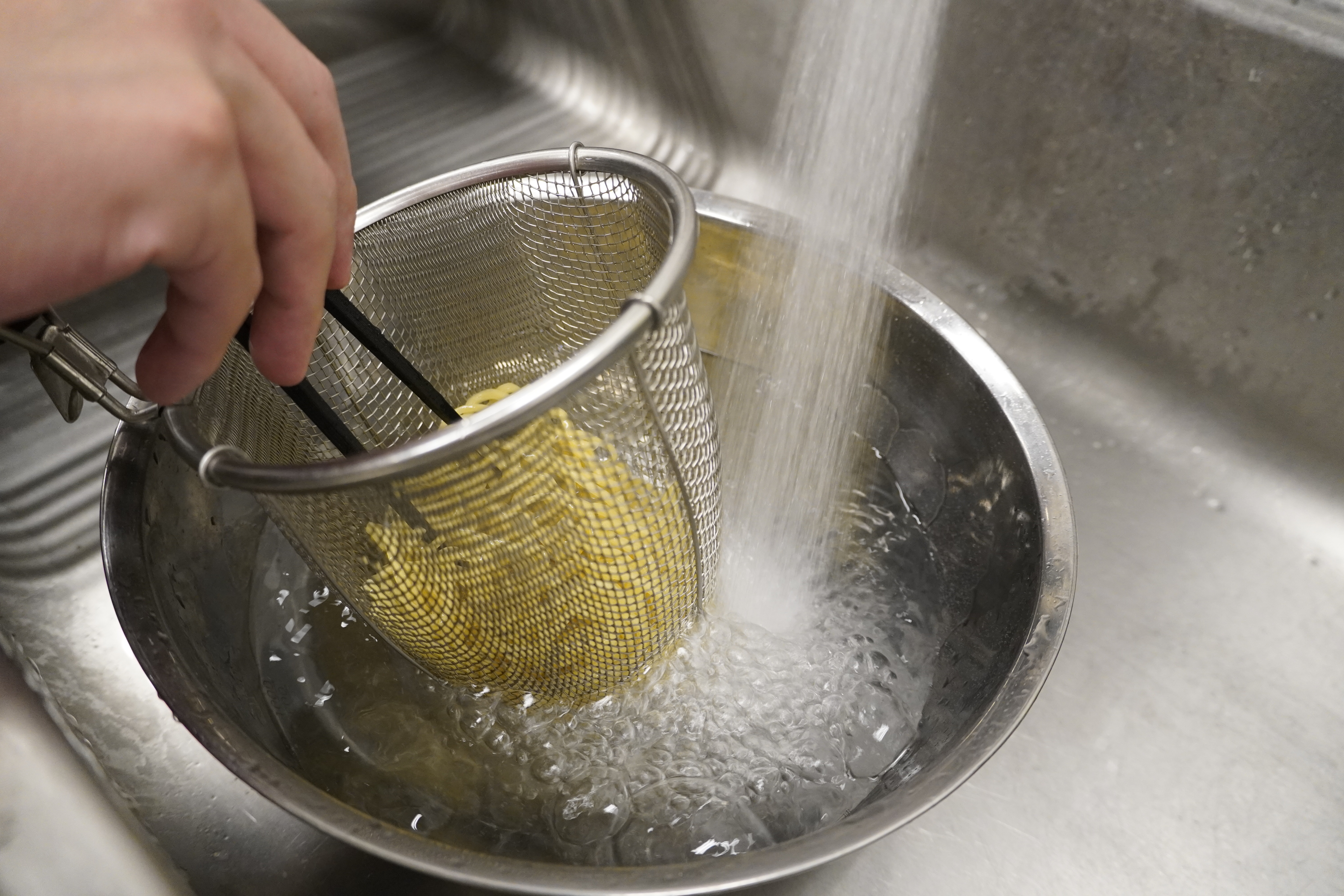
After filling with water, drain thoroughly and place in a container.
This time I tried dividing it into small portions for each person as shown in the photo.
Once everything is ready, it's time to freeze!
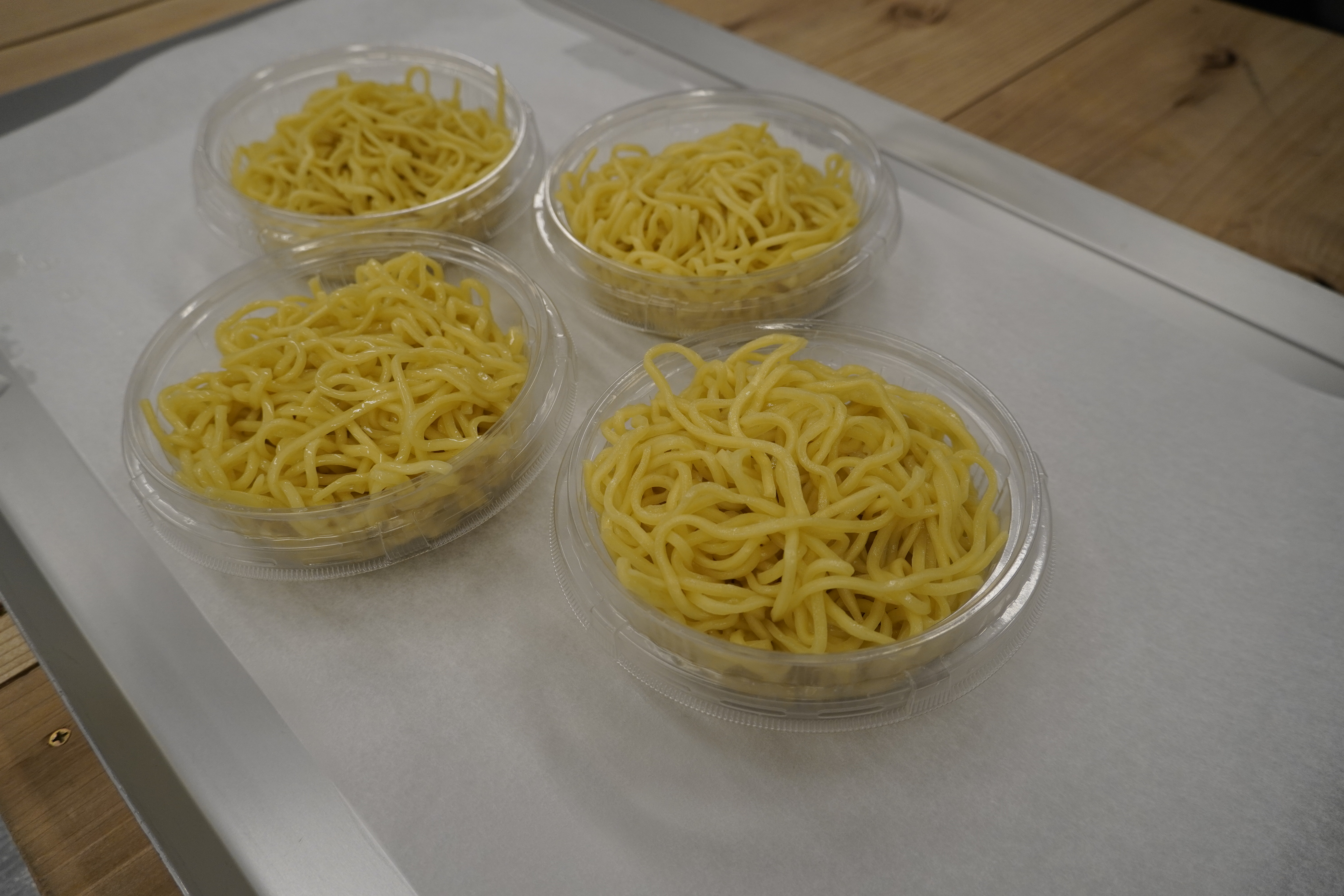
frozen ramen
This time, I froze the ramen noodles and soup separately.
freezing noodles
Freeze the noodles, which have been processed before freezing and divided into small portions, in an Artlock freezer.
I put it in the container and froze it in the Artlock freezer.
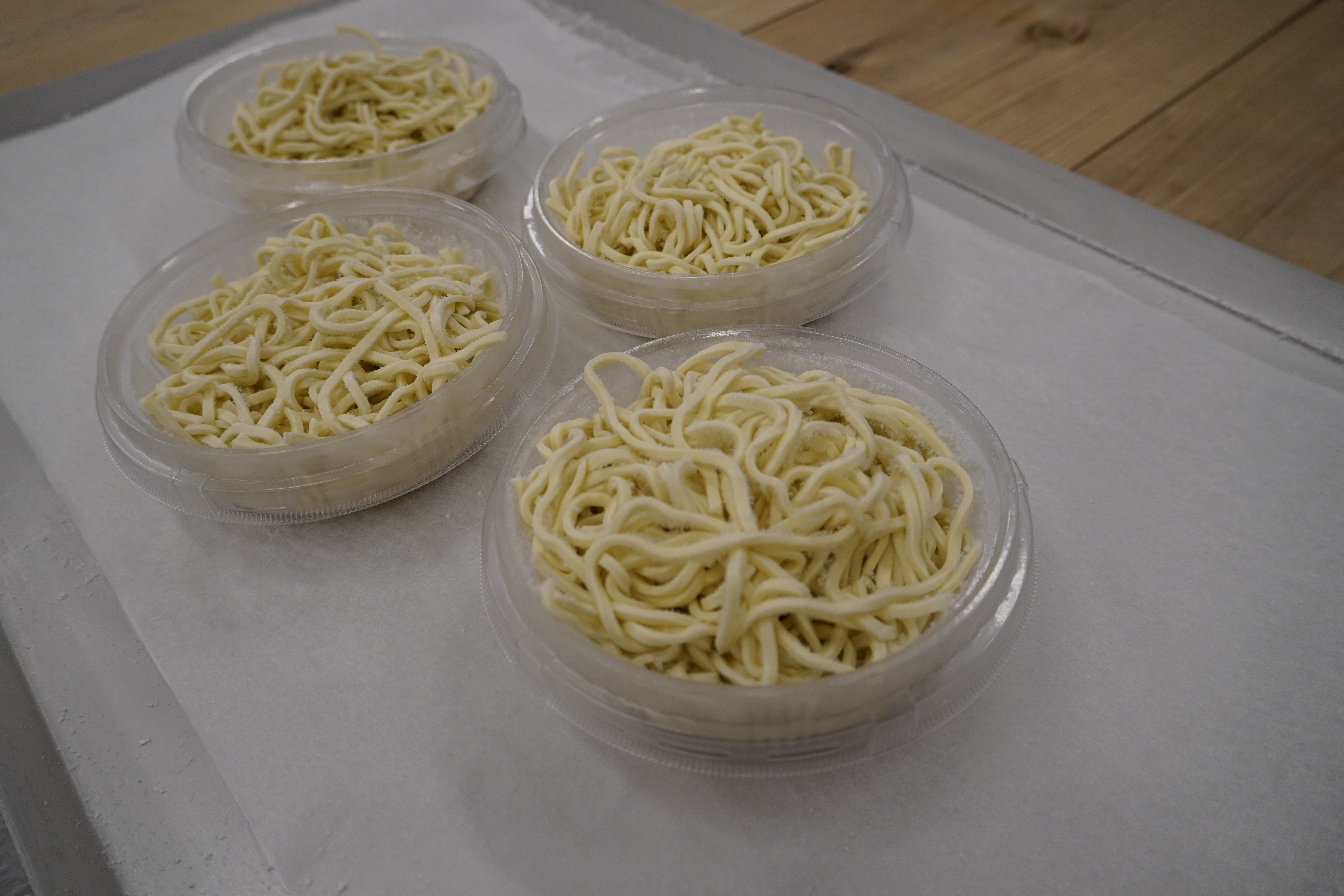
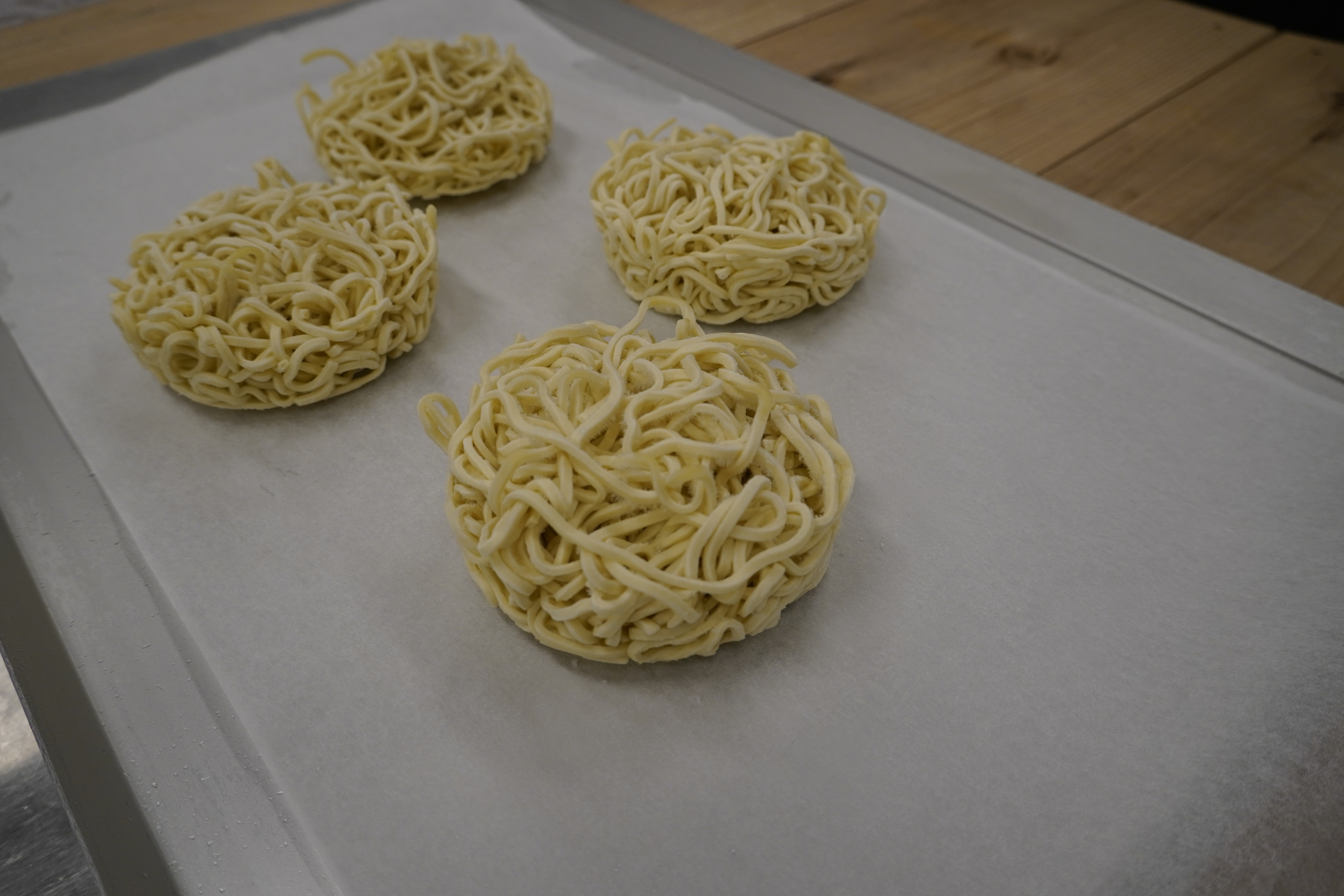
freezing soup
I also froze the soup in the Artlock freezer.
The soup is freshly made and kept piping hot in the Artlock freezer.
The Artlock Freezer prevents frost from forming on the refrigerator even when you put hot food such as piping hot soup in it, and it can operate continuously, allowing you to efficiently perform freezing tasks!
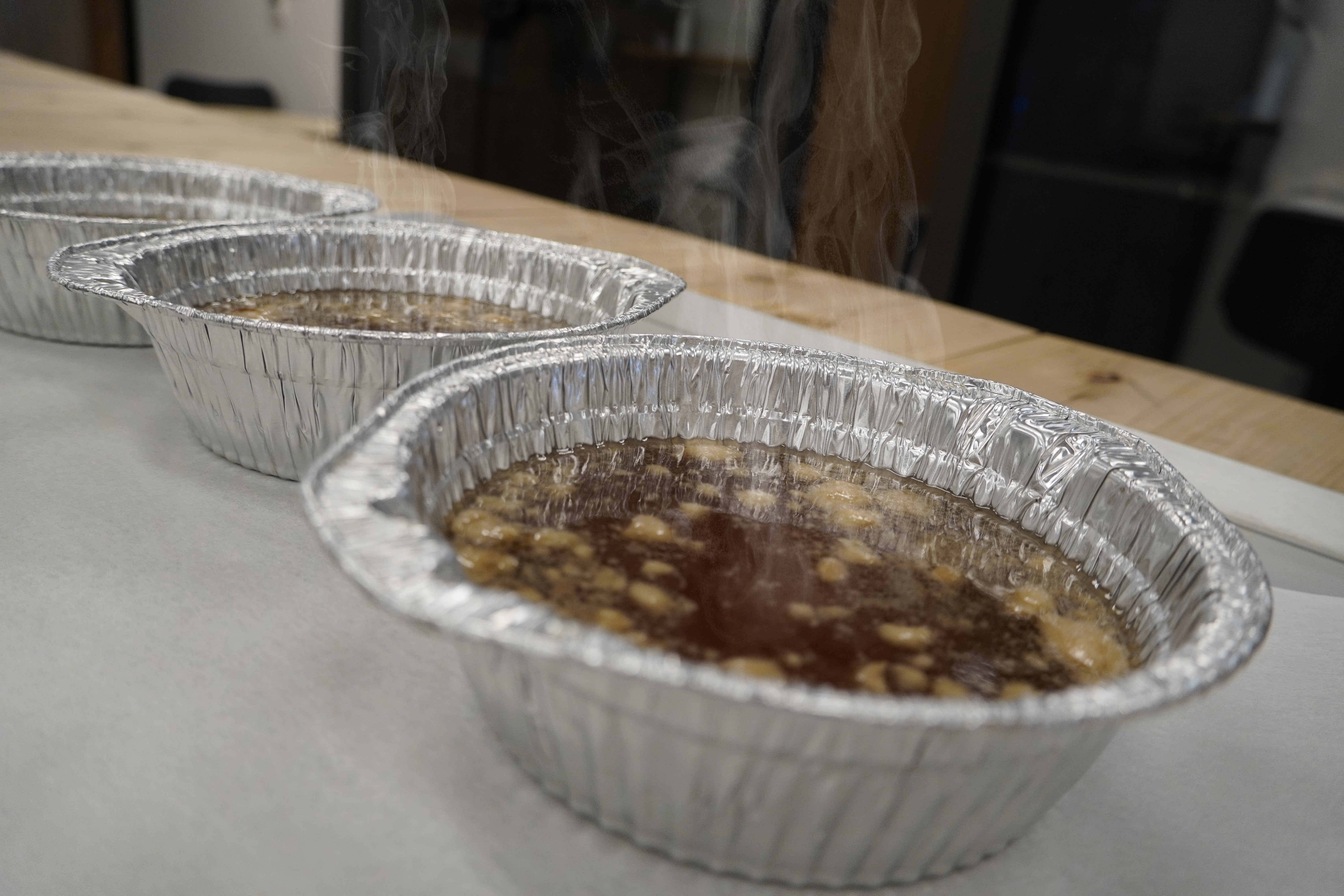
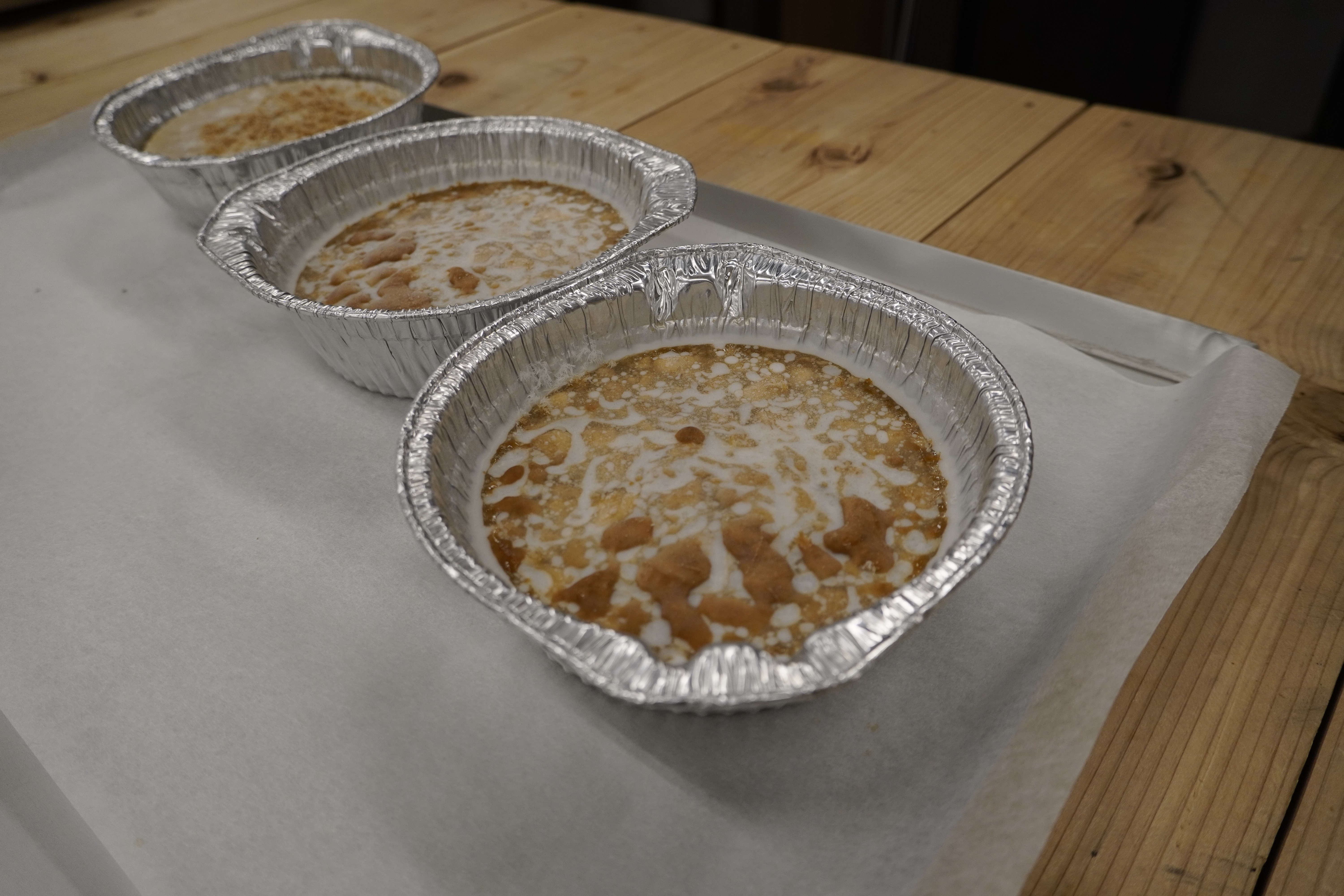
Serve after freezing
This time, the noodles and toppings are placed on top of the frozen soup so that consumers can easily thaw and eat it.
Here is what was served.
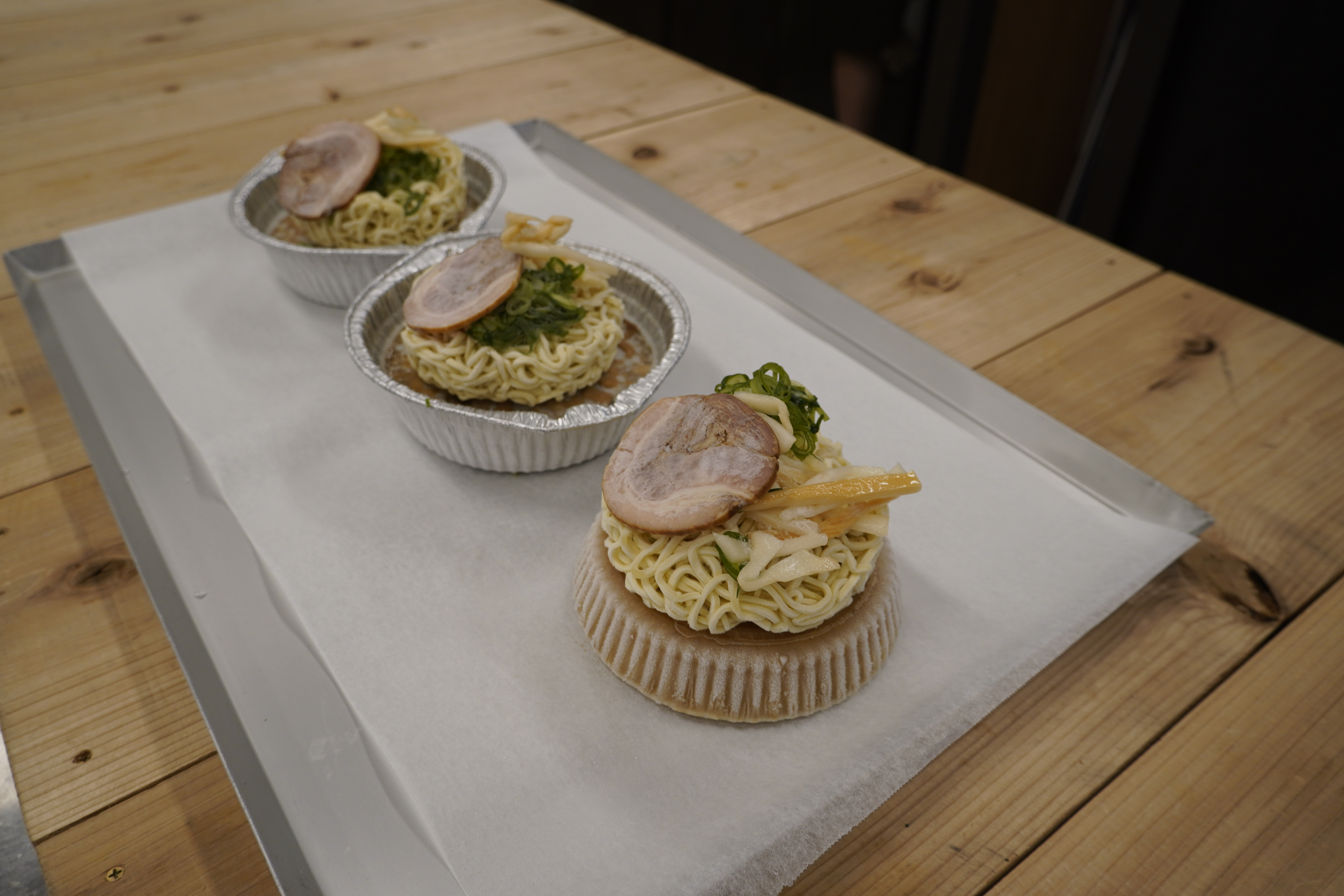
This time we used packaging material that is compatible with IH stoves, so it has this shape, but if you change the mold when freezing, it can be used for frozen vending machines, or the slim shape can be used for mail order!
Thawing and cooking ramen
Next, thaw and cook the ramen.
I thawed and cooked frozen ramen that I had frozen in the Artrock freezer, plated, and stored for about a week.
Even after one week of storage, there were no significant changes from immediately after freezing.
This is frozen ramen before thawing.

This time, after freezing, we arranged it and made it into a one-piece dish, so you can eat it just by heating it.
I used a container that can be heated either on IH or over an open flame, so this time I thawed and cooked it on an IH stove.
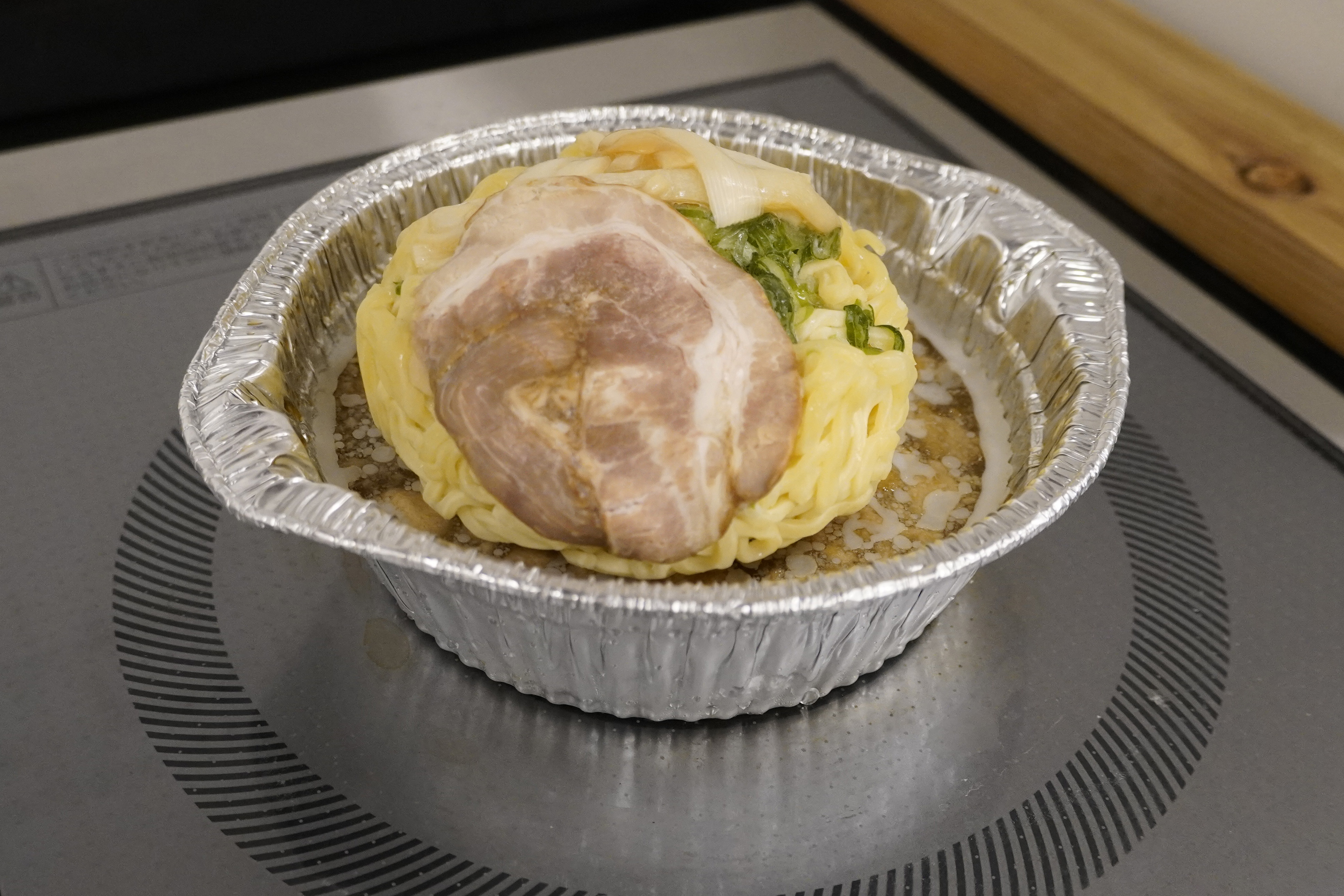
If you heat it over medium-high heat, steam will come out when the soup first starts to melt.
As the noodles absorb the steam, they gradually thaw as well.
When the soup was completely melted, I loosened the noodles and they came apart easily.
The heating time so far was about 6 and a half minutes.
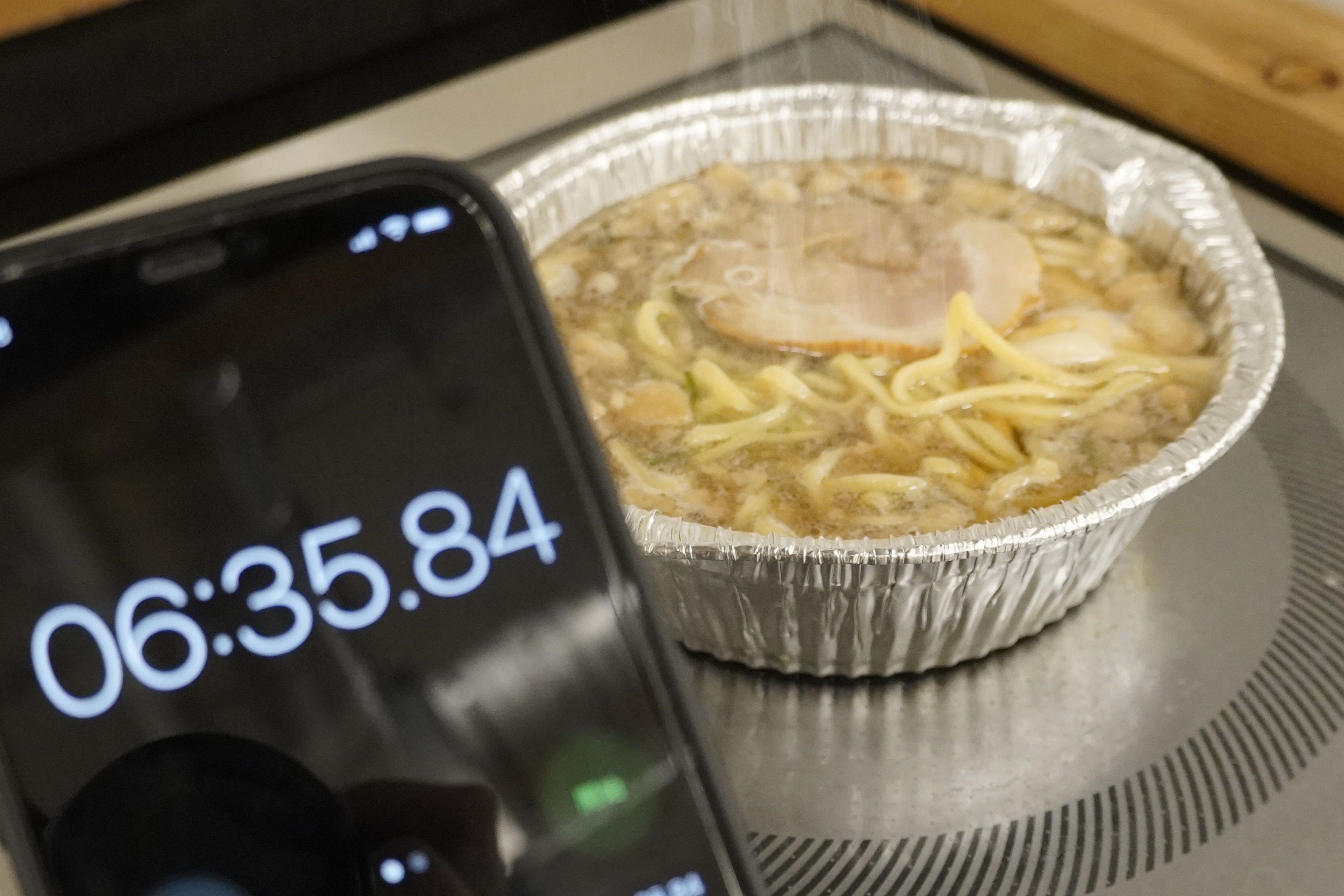
Conclusion
This time, I experimented with ways to freeze and thaw piping hot ramen.
Considering that the noodles would be heated again when thawed, I boiled the noodles for a short time and added water, and the soup was frozen in the Artlock freezer while still piping hot.
By placing the noodles and ingredients on top of the frozen soup and making it into a single piece, we heated it on an IH stove to thaw and cook, resulting in delicious ramen.
It may be necessary to prepare the ramen differently from the ramen we usually offer, such as the degree of boiling of the soup and the difference in the ingredients and composition of the noodles, but the compatibility of ramen and Art Rock freezer is good, and the reproducibility is 100%. We have received many feedback that it is %!
In particular, we often receive comments such as `` The soup has a strong aroma'' and `` The chewiness and texture of the noodles are very reproducible.''
Ramen is difficult to offer only in stores, but if it can be made into a frozen product that can be easily made, there are many opportunities to expand the number of sales outlets.
It can also be used in stores, such as increasing production efficiency by preparing and stocking a large amount of soup, and shortening serving time by boiling noodles in advance and storing them.
There are some noodle formulations that are suitable for freezing, but I will tell you about the recipe in another article.








![[Storage period increased by 30 times! ] Achieving a stable supply of raw whitebait!](https://shunkashutou.com/wp-content/uploads/2016/11/579c55e6d32e1385c250e8e7c3ed59a71.jpg)
![[Sales increased 100 times! ] rapid freezing the signature menu “Ni-katsu sandwich”!](https://shunkashutou.com/wp-content/uploads/2016/11/IMG_02391.jpg)
![[Horse sashimi] We have significantly reduced waste loss with rapid freezer!](https://shunkashutou.com/wp-content/uploads/2016/11/5fda59d0cbcdabde18e58c3c58c09ed0.jpg)




![[Storage period increased from 3 days to half a year! ] Restaurants are expanding their business using wholesale and mail order!](https://shunkashutou.com/wp-content/uploads/2018/04/66c19942ab4ba346fdb64ccc04cde373.png)
![[Reduce loss from 200 kg of oysters to zero] Improve loss and expand business with rapid freezer](https://shunkashutou.com/wp-content/uploads/2018/06/19785ca583a8d3c4041c7c192d041b0d.jpg)














![[Explanation with photos! ] How to freeze taro, storage period, and 5 recipes!](https://shunkashutou.com/wp-content/uploads/2023/10/116858380_-768x512-1.jpg)
![Introducing how to freeze/thaw salmon roe and how long to store it [includes carefully selected recipes]](https://shunkashutou.com/wp-content/uploads/2023/09/236b884b68d07d2f5983f2b9ea66583d.jpg)
![[How to use leftover sashimi! ] Introducing frozen preservation methods and arrangement recipes](https://shunkashutou.com/wp-content/uploads/2023/10/7451dbe2231dbc559fe002350b8add67.jpg)
![Explaining how to freeze garland chrysanthemums with photos! [Defrosting and storage period, 5 recipes]](https://shunkashutou.com/wp-content/uploads/2023/10/syungiku-catch-768x512-1.jpg)
![How to freeze mizuna and 5 recipes! [Explanation with photos! ]](https://shunkashutou.com/wp-content/uploads/2023/09/b22c59559b7316b40d35d2555434791e.jpg)
![How to freeze natto, expiration date, baby food and carefully selected recipes [Explanation with photos! ]](https://shunkashutou.com/wp-content/uploads/2023/07/055e5e865986b68d11c3f49f11ea6008.jpg)
![[Explanation with photos] Freezing and storage period of yellowtail fillets, carefully selected recipes!](https://shunkashutou.com/wp-content/uploads/2023/08/2613b1c938d382e3afc17125432167f0-1.jpg)
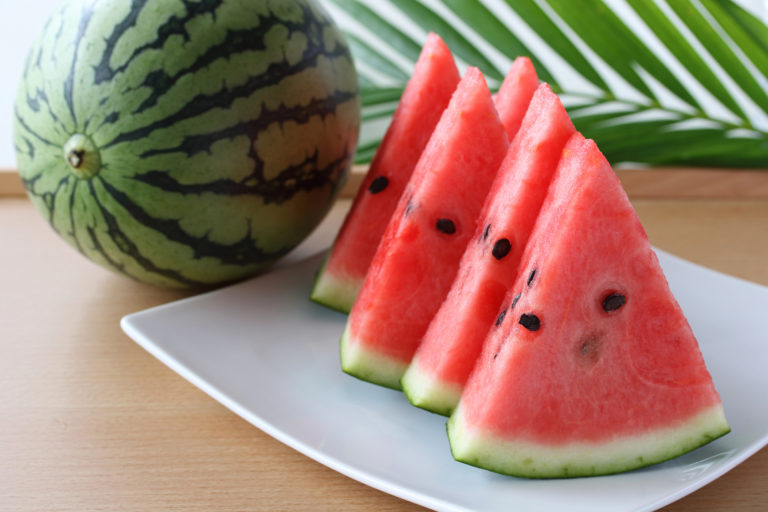
![[A little different! ? ] How to defrost frozen udon and 7 different recipes!](https://shunkashutou.com/wp-content/uploads/2023/08/91fb1e27ec38400acc9b3b6ca6233f65.jpg)
![[Freshly made raw soba all over the country! ] Example of introducing a quick freezer at a soba restaurant](https://shunkashutou.com/wp-content/uploads/2024/09/6d8138adcf26c410c11b25d5b8d2f3de.webp)
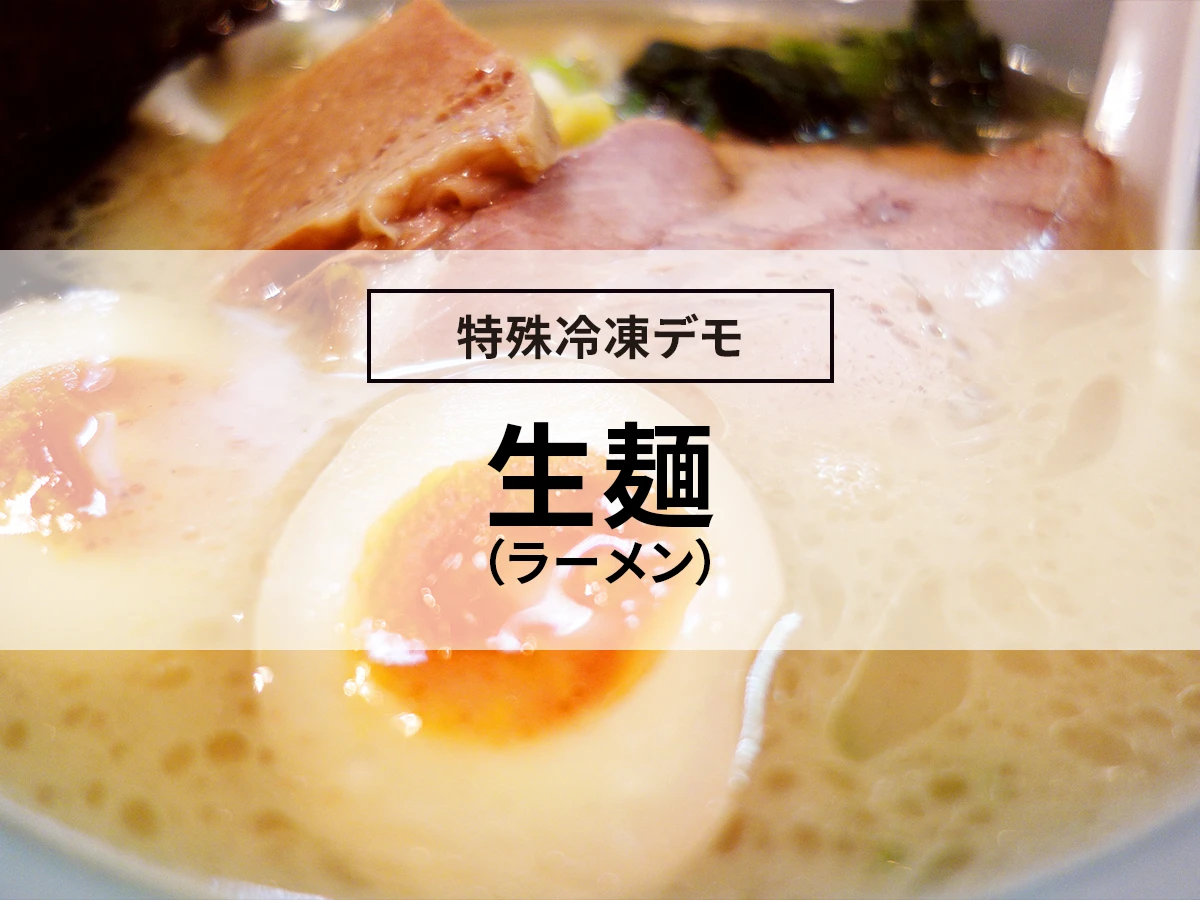
![[Freezing Ramen] rapid freezing demo](https://shunkashutou.com/wp-content/uploads/2017/04/5bd196dffb982354d8f83114a5f7bdf2.webp)
![[Increase sales! ] Three reasons why ramen restaurants should install rapid freezer](https://shunkashutou.com/wp-content/uploads/2024/08/deb66347f085932482279d9069d398c8.webp)
![[Shop for carefully selected fresh udon] 5 reasons why udon restaurants should introduce rapid freezing](https://shunkashutou.com/wp-content/uploads/2021/02/713146fd51058df15ccc18c6188c1407.jpg)
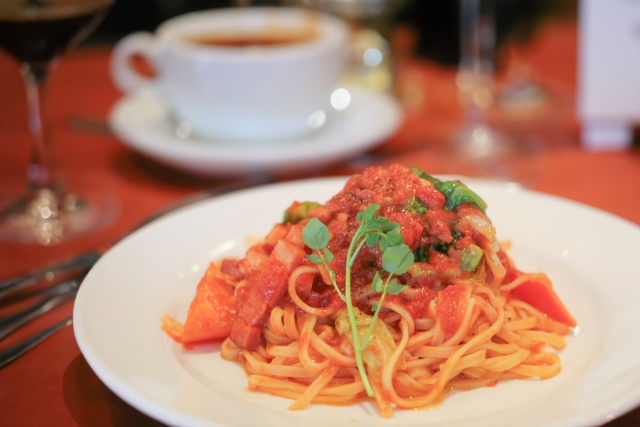
![[Explanation with photos! ] Introducing the method and recipe for freezing komatsuna](https://shunkashutou.com/wp-content/uploads/2023/09/5d2a19a6e6cfb5ad0329d8fce162f292.jpg)
![[Includes grilling instructions] How to freeze hamburger steak, storage period, and carefully selected recipes!](https://shunkashutou.com/wp-content/uploads/2023/09/eb3a531f7fd023f973240f698c092b64.jpg)
![[Explanation of how to fry! ] How to freeze and thaw pork cutlet, remake recipe!](https://shunkashutou.com/wp-content/uploads/2023/10/0a4143ad8ea0cc6bb6fdab8c74fab407.jpg)
![[Commercial use] Thoroughly investigate the cause of frost forming in the freezer! How to prevent frost formation?](https://shunkashutou.com/wp-content/uploads/2024/08/09c17e4deeb1ac0cdc5a513eaf89ab1a.webp)

![Introducing the method and recipe for freezing green onions [Explanation with photos]](https://shunkashutou.com/wp-content/uploads/2023/09/negi5-768x512-1.jpg)
![How to freeze sweet potatoes, storage period, and 5 recipes! [Explanation with photos! ]](https://shunkashutou.com/wp-content/uploads/2023/10/36256af24531b73a036523ba73bdf9ec.jpg)
![[Explanation with photos! ] How to freeze pork, expiration date, and 5 recipes!](https://shunkashutou.com/wp-content/uploads/2023/10/8688cd28f298c3180c30169cec815293.jpg)
![[Supervised by a nutritionist! ] How to freeze bean sprouts, storage period, and 5 recipes!](https://shunkashutou.com/wp-content/uploads/2023/09/34f4d39c30e79629a89bf54221841964.jpg)
![[Explanation with photos! ] How to freeze and fry croquettes, 5 carefully selected recipes](https://shunkashutou.com/wp-content/uploads/2023/09/b364ee97a71777f9dd2e35fddbbdda72.jpg)
![Introducing recipes and methods for freezing spinach [Explanation with photos! ]](https://shunkashutou.com/wp-content/uploads/2023/10/spinachh-768x512-1.jpg)
![[Boiled eggs can be frozen! ] How to freeze boiled eggs, storage period, and recipe introduction](https://shunkashutou.com/wp-content/uploads/2023/07/e9e8eb9cedf1c8fe2dea6d08c136952e.jpg)

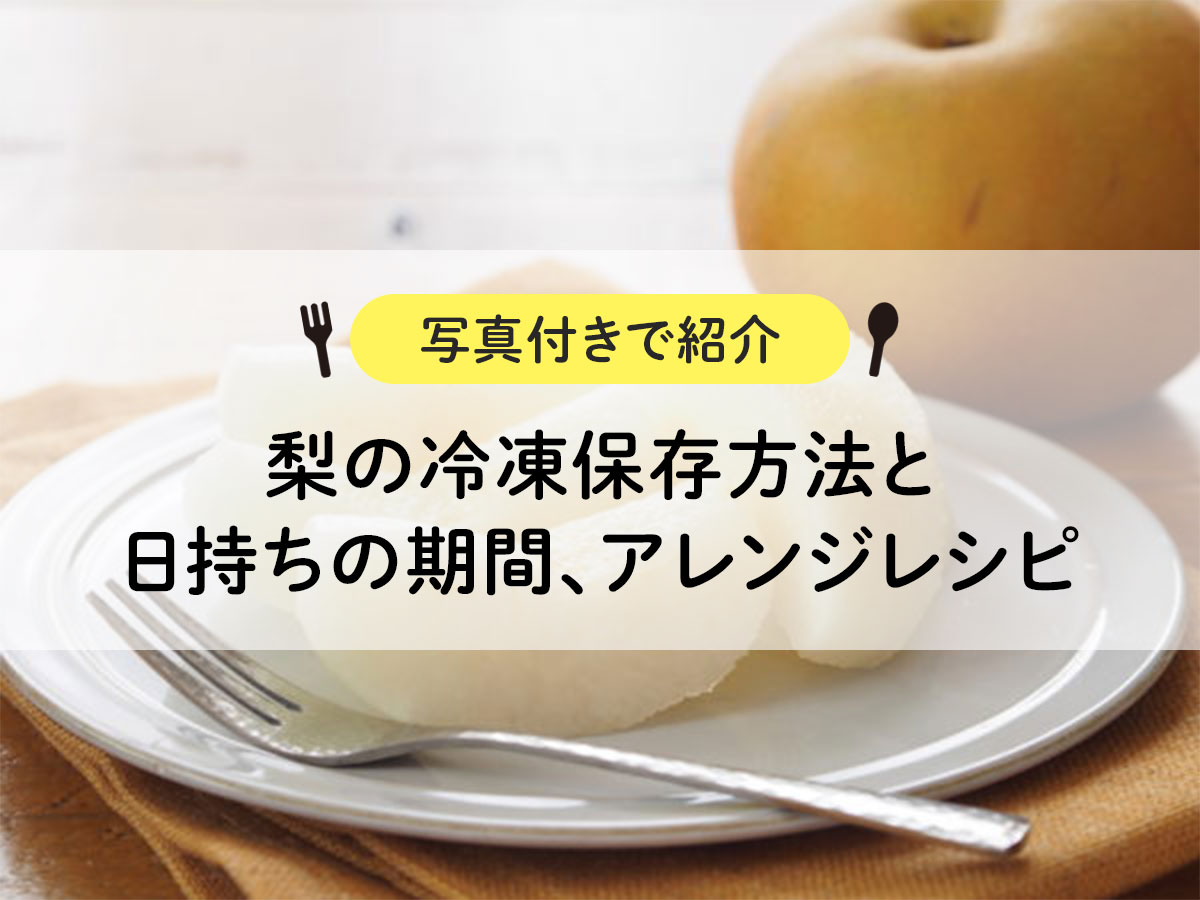

![[Convenient for lunch boxes! ] How to freeze fried noodles and 5 different recipes](https://shunkashutou.com/wp-content/uploads/2023/10/yakisoba-768x512-1.jpg)
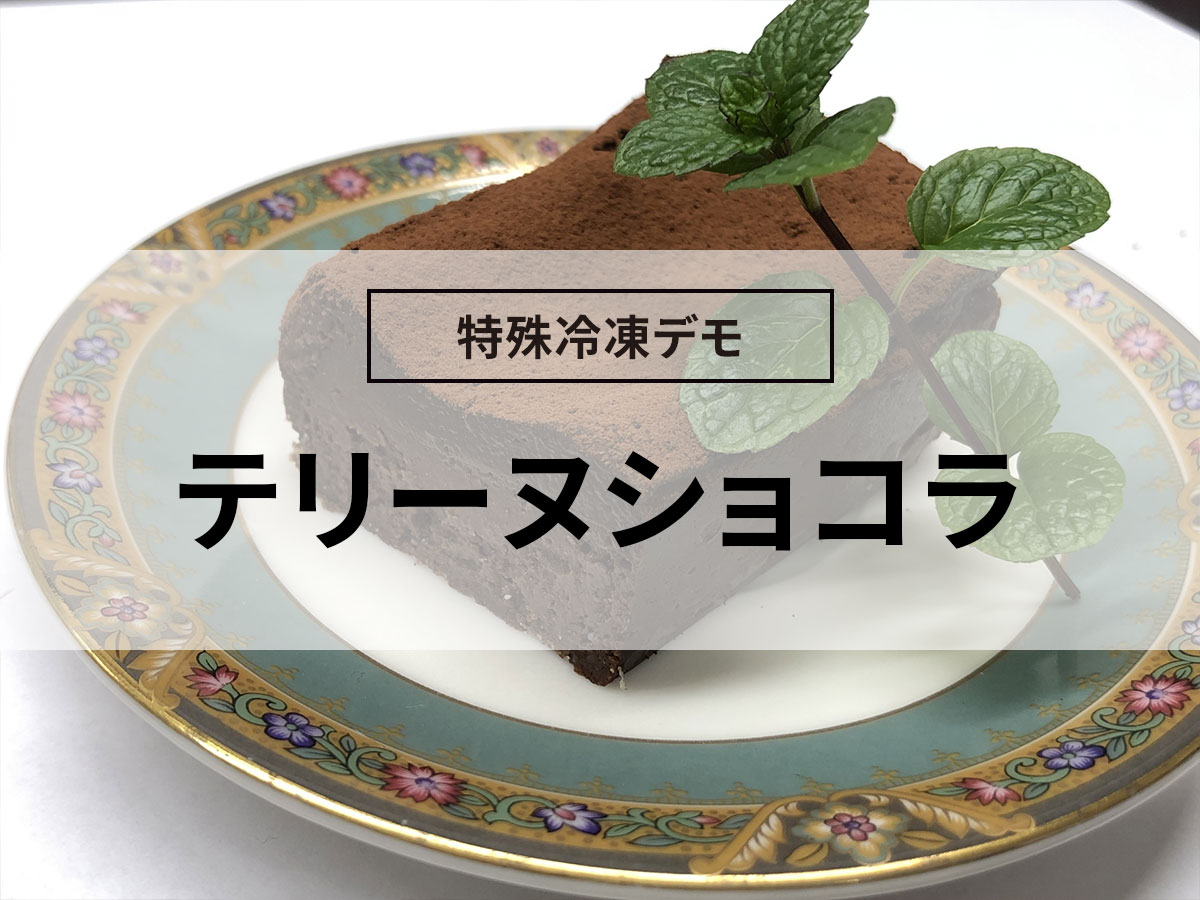

![How to freeze cucumbers and 5 recipes! [Explanation with photos! ]](https://shunkashutou.com/wp-content/uploads/2023/09/37a83e91a989dfbc285ac11dede7c8c2.jpg)
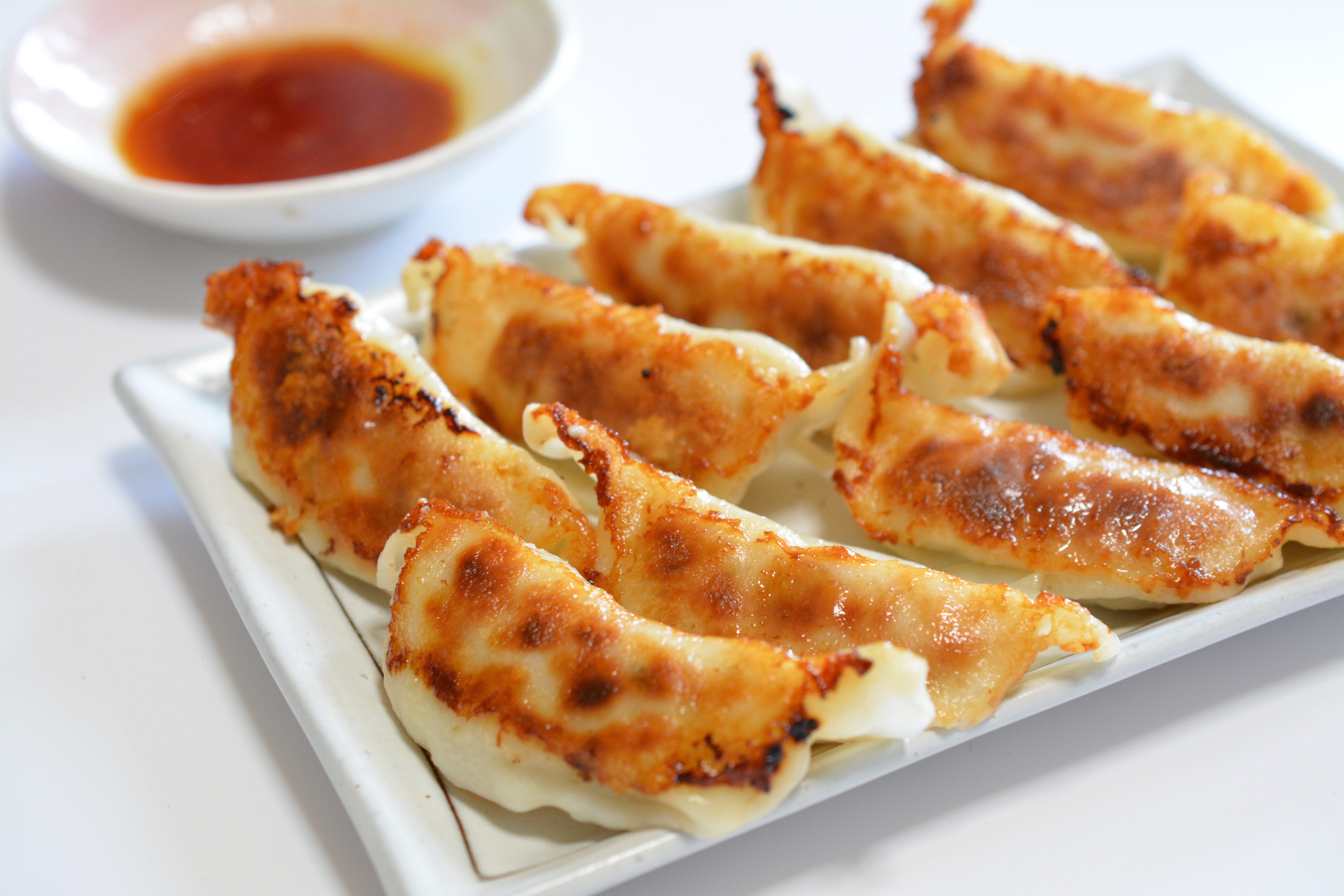
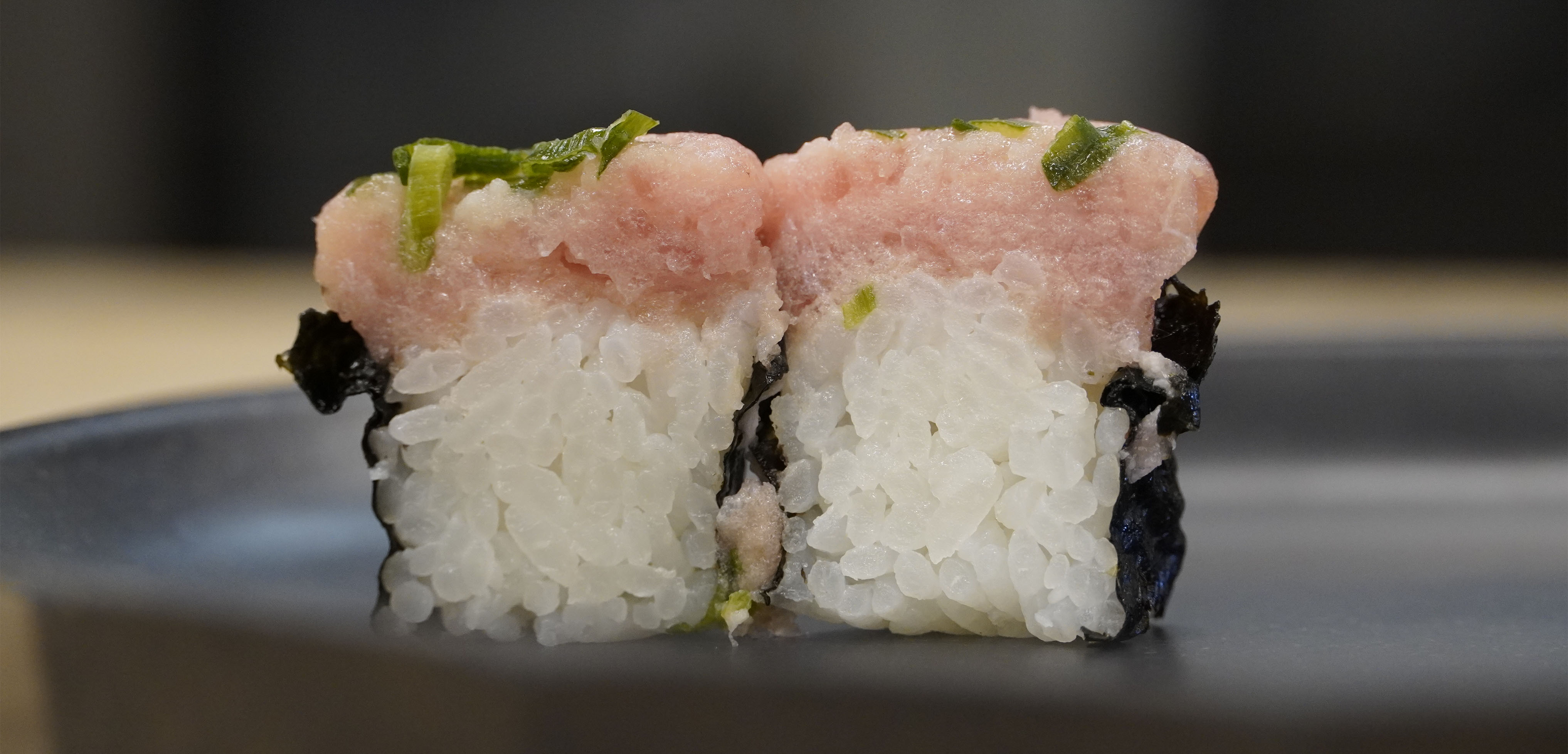

![[Can it be frozen? ] How to freeze and thaw okonomiyaki, arrangement recipe!](https://shunkashutou.com/wp-content/uploads/2024/01/58bc763c02f23a2a6442d6449853a67b.jpg)




